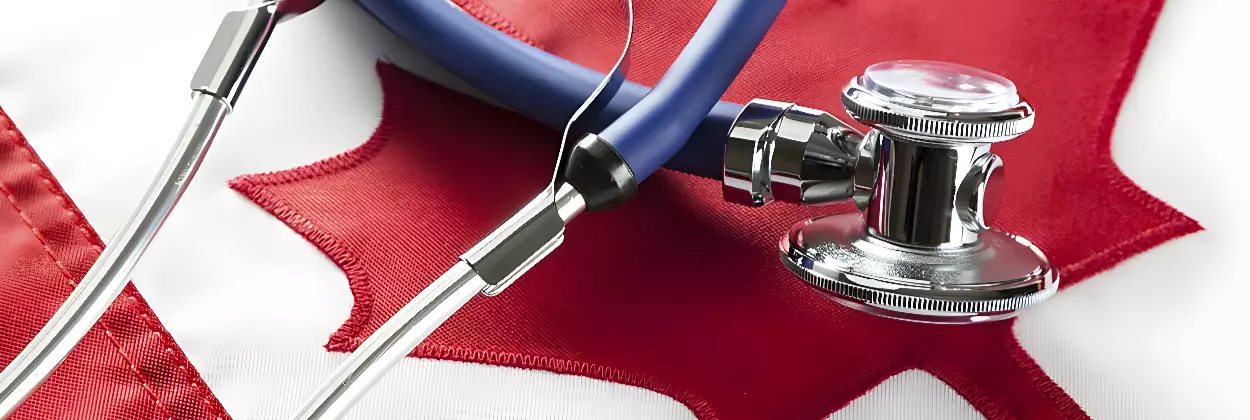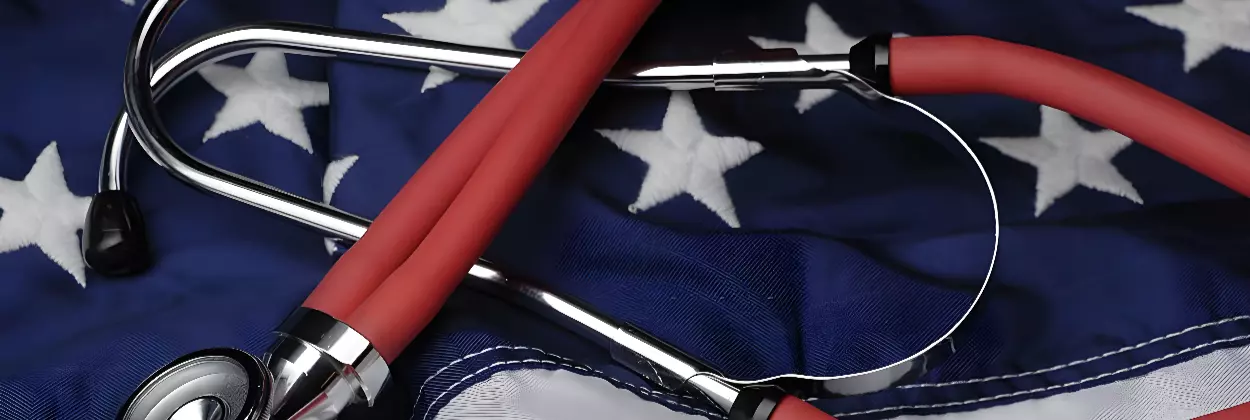Medical Device Certification – Canada vs. US Overview
We’re exploring the complex world of medical device certification in Canada and the U.S., focusing on key elements such as device regulation, classification, and the medical device license process. With our extensive experience, we’ve covered everything from risk classifications to post-market surveillance, emphasizing key similarities and differences in medical devices in Canada.
Join us as we guide you through these essential aspects of medical device regulation.
Defining Medical Device Regulations
Transitioning to defining medical device regulations for certification, it’s vital to grasp the two primary components: medical electrical equipment and risk classification.
This involves looking at devices connected to supply mains used for diagnosis, treatment, or patient monitoring.
Also, we will examine the risk classes, categorizing these devices based on their potential harm, from casual to critical contact.

Medical Electrical Equipment and Risk Classification
In our judgment, when considering the certification processes, it’s important to emphasize the importance of medical electrical equipment and its risk classification, a crucial determinant affecting the level of scrutiny a device undergoes for approval.
This classification of medical devices is determined by risk assessment, with classes ranging from 1 to 3 in the U.S., and classes 1 to 4 are for Canada and the EU. The higher the risk, the stricter the standards and regulations for safety.
The certification process begins with a thorough understanding of these classifications, as they establish the baseline for the device’s safety and effectiveness. Keeping these aspects in mind is essential for shaping the regulatory environment, ensuring only compliant and effective devices reach the market.
Understanding these regulations and standards helps us all contribute to public health and safety.
Comparative Overview of Canadian and U.S. Regulatory Frameworks
Turning our attention to a comparative overview of the regulatory frameworks in Canada and the U.S., we define the regulations determining medical device certification in both countries, including the unique Canadian medical device regulations.
In Canada, Health Canada oversees the medical device classification and licensing process, which includes a robust post-market surveillance system. Unique features of the Canadian regulatory framework include the Medical Device Single Audit Program, reflecting Canadian regulatory action on medical devices.
Meanwhile, in the U.S., the FDA regulates devices, requiring premarket notification or approval, and utilizes a unique device identification system.
Despite these differences, both countries prioritize safety, efficacy, and quality control of the medical instruments used in the medical device industry.
We’re certain that these complex systems remind us of the vital role we play in this field.

Canada’s Medical Device Certification Process
In a recent analysis of the certification process for medical devices in Canada, we explored Health Canada’s classification methods for these devices, the essential stages spanning from licensing to post-market surveillance, and the precise standards governing the Canadian medical device industry.
In our opinion, grasping these details is key, as they shape the regulatory landscape for medical device manufacturers in Canada, ensuring compliance with Canadian medical device regulations.
Health Canada’s Standards and Device Classification
Under the purview of Health Canada, a straightforward classification system for medical devices based on risk ensures patient safety and device efficacy. This system divides devices into four classes, with Class I being the lowest risk and Class IV the highest. The role of Health Canada is crucial in upholding these standards and classifications as part of the certification process.
Here’s an overview of how devices are grouped:
| Device Class | Risk Level |
|---|---|
| Class I | Lowest |
| Class II | Low to Moderate |
| Class III | Moderate to High |
| Class IV | Highest |
To meet efficacy requirements, all medical electrical equipment entering the Canadian market must adhere to specific CSA standards. This commitment to strict standards and thorough classification is a testament to Health Canada’s dedication to patient safety and risk management of medical devices.
Key Steps in Certification: From Licensing to Post-Market Surveillance
The licensing process, required by Health Canada, begins with obtaining a Medical Device Establishment License (MDEL) or Medical Device License. The new medical device then undergoes a thorough review process, with a focus on safety and efficacy.
One of the key requirements of the Canadian medical device approval process, is a robust Quality Management System (QMS). ISO 13485 compliance, a global standard for QMS in the medical device industry, is necessary.
Post-market surveillance ensures ongoing safety and effectiveness. Unique aspects include referencing foreign approvals and utilizing the Medical Device Single Audit Program (MDSAP).
Understanding these steps is vital for those looking to certify a medical device in Canada and comply with Canadian regulations for medical devices.
Unique Aspects of Canadian Medical Device Regulation
An analysis of the unique facets of Canadian medical device regulation draws to the distinct inspection pathways and international alignments that signify Canada’s regulatory approach toward medical devices.
We explore the CSA SPE-3000 Model Code, an essential tool for field evaluation in certain scenarios.
Furthermore, we take note of Canada’s notable engagement in the Medical Device Single Audit Program (MDSAP), illustrating its commitment to international medical device standards within the Canadian medical device industry.
Special Inspection Pathways: CSA SPE-3000 Model Code
Now, let’s take a look into the unique aspects of Canadian medical device regulation, particularly the special inspection pathway known as the CSA SPE-3000 model code. This code addresses scenarios where standard certifications may not apply.
These situations include:
- Custom built equipment: Unique, bespoke devices designed for specific medical applications.
- Non-repetitive manufacturing: Production runs that aren’t intended for mass-market distribution.
- Limited quantity sales: Devices manufactured and sold in small quantities.
- Unavailable certified equipment: Situations where certified versions of necessary medical devices aren’t readily available.
This special pathway ensures that even in these unique situations, all medical devices sold in Canada meet applicable requirements. It’s a hallmark of Canada’s commitment to patient safety and effective medical treatment.
Medical Device Single Audit Program (MDSAP) and International Standards
Exploring the Medical Device Single Audit Program (MDSAP) and adherence to international standards, both unique aspects of Canadian medical device regulation.
Through MDSAP implementation, Canada displays a commitment to regulatory efficiency and harmonization efforts. This program allows for a singular audit that satisfies regulatory requirements of multiple countries, enhancing global certification processes. It’s a testament to Canada’s eagerness to adopt international standards, demonstrating its active role in global regulatory harmony.
This not only increases the speed of device approvals but also fosters a sense of belonging among international regulatory bodies. Staying informed about these evolving standards directly impacts the certification processes in different countries.

The U.S. Approach to Medical Device Certification
Now, turning our attention to the U.S. approach to medical device certification.
We examine the FDA’s standards and classification of devices, followed by a look at the diverse certification pathways, such as the 510(k) notifications and PMA.
As an accredited Certification Body for medical devices, we’re certain to maintain a vigilant awareness of the regulatory landscape and the analytical details that set apart the U.S. system.
FDA Standards and Device Classification in the U.S.
Let’s focus on the FDA’s standards and device classification system of the U.S. approach to medical device certification. The FDA plays a pivotal role in ensuring device safety, with all medical electrical equipment required to comply with ANSI/AAMI standards.
The FDA classification of medical devices is broken down into three risk categories:
- Class I: Low risk devices (e.g., bandages)
- Class II: Moderate risk devices (e.g., syringes)
- Class III: High risk devices (e.g., pacemakers)
Each class has its own set of regulatory controls, and the higher the class, the more stringent the requirements. For instance, Class III devices usually need a Pre-market Approval (PMA), a rigorous review of safety and effectiveness.
In our judgment, this classification system stands as a cornerstone of the FDA’s approach, ensuring rigorous vetting of devices before their market introduction.
Certification Pathways in the U.S.: 510(k), PMA, and More
Exploring further, the U.S. offers several certification pathways for medical devices, such as the 510(k) notification process and the Pre-market Approval (PMA) pathway.
The 510(k) process is typically used for devices that are substantially equivalent to a device already on the market. Conversely, PMA is often required for novel or high-risk devices and involves a comprehensive review of the device’s safety and effectiveness.
From our expert perspective, understanding these pathways is crucial for manufacturers seeking FDA approval for their medical devices. Each pathway has its specific requirements and is appropriate for different types of medical devices based on a risk-based classification system.
Key Differences Between Canadian and U.S. Medical Device Regulations
While there are similarities in the regulatory frameworks of Canada and the U.S., there are also key differences that impact the certification process.
One significant difference is in the classification systems and the subsequent regulatory processes. For example, Canada’s Class IV and the U.S.’s Class III both represent high-risk devices, but the specific requirements for approval can vary significantly.
In our experienced opinion, appreciating these differences is essential for manufacturers who operate in both markets, as it affects their product development and certification strategies.
Winding Down This Discussion
In summary, the certification of medical devices in Canada and the U.S. involves complex, yet distinct regulatory frameworks. Each country has its own set of standards, classification systems, and certification pathways, tailored to ensure the safety and effectiveness of medical devices.
From this comprehensive analysis, it’s clear that thorough knowledge of these regulations is crucial for manufacturers. Staying on top of the latest developments and understanding the nuances of each system can greatly help when trying to certify a new medical device to market in Canada or U.S.
We hope our insights into medical device certification have shed light on the importance of regulatory compliance and the challenges it presents. It’s been our longstanding belief here at LabTest, that with the right knowledge and guidance, these challenges can be successfully navigated, ensuring that medical devices that are both effective and compliant reach those who need them most.

